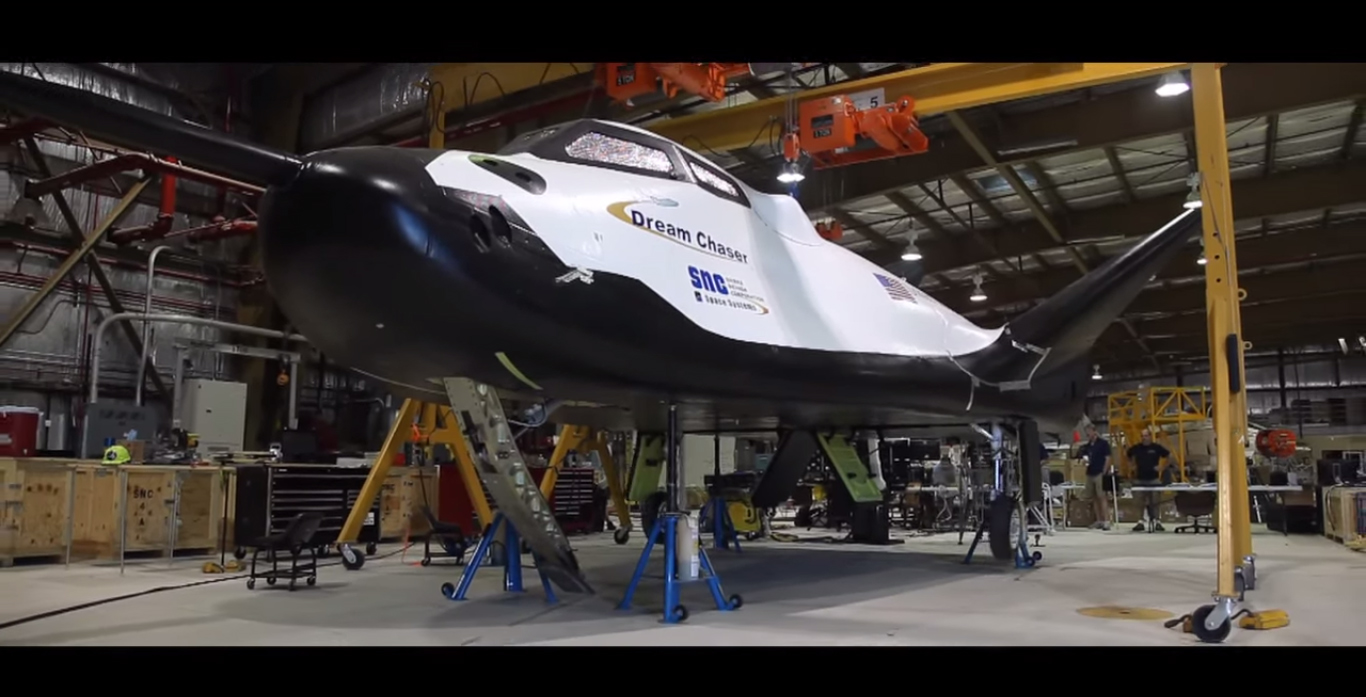
Construction of the first commercial Dream Chaser space plane that will propel Americans back to space from American soil is well underway and accelerating to insure “its ready for the first launch in November 2016,” Mark Sirangelo, corporate vice president of Sierra Nevada Corporation (SNC) Space Systems, told AmericaSpace in Part 2 of our exclusive, one-on-one interview about their human spaceflight efforts to build a credible and affordable astronaut taxi for NASA.
“We have been laying the foundation with many relationships. And we are working on a global basis,” Sirangelo emphasized. “All the elements are there and they are tangible and touchable, not theoretical.”
In Part 1 of this series, Sirangelo described SNC’s assembly and upcoming free flight drop test program for the atmospheric test vehicle that will pave the path to the eventual Dream Chaser orbital vehicle, just as the Enterprise did for NASA’s shuttle orbiters in the 1970s.
In Part 2, we’ll focus on how SNC is boldly pushing forward with the orbital vehicle build even before the winners of NASA’s highly coveted and prestigious commercial crew vehicle contracts are announced by NASA.
“The three big things ahead of us are the continuation of the atmospheric flight test program this fall [2014], the delivery of the orbital vehicle [2015] and the preparations to ready for the first launch [2016],” Sirangelo said.
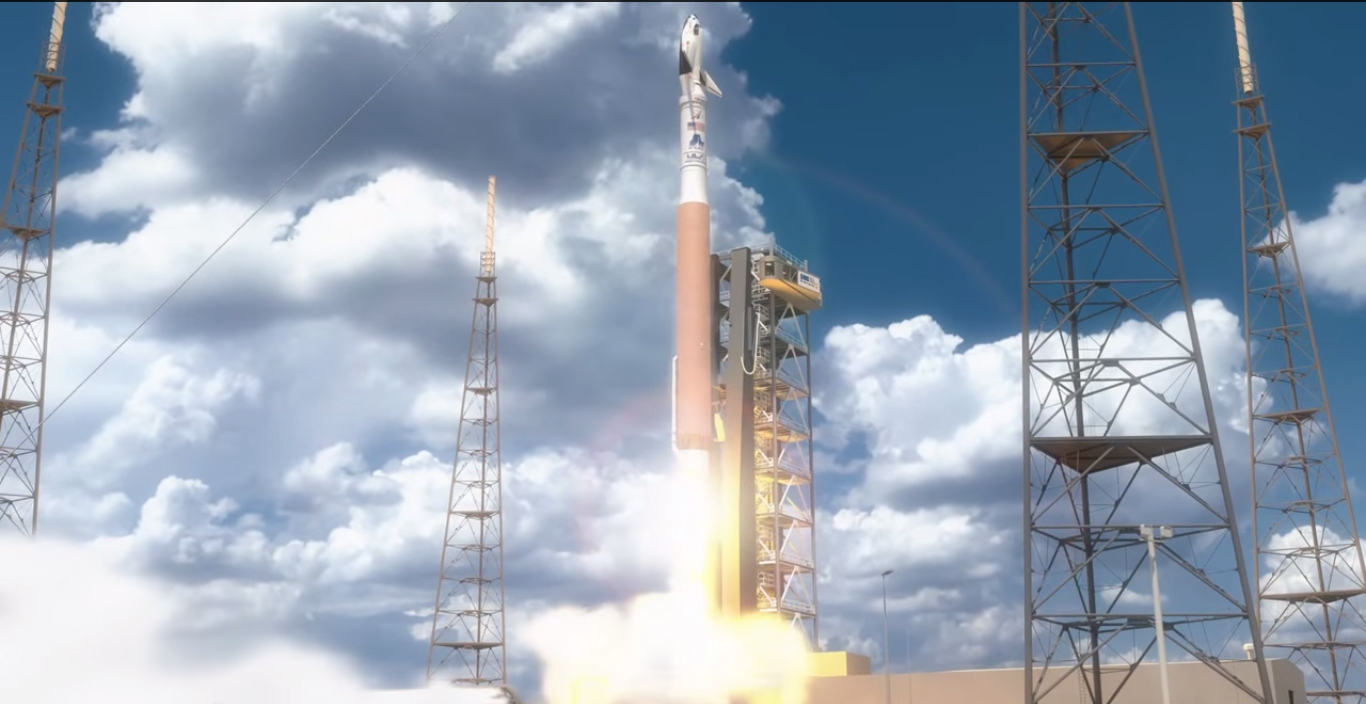
And rather impressively, SNC has already commenced building the inaugural Dream Chaser winged orbital vehicle and purchased the Atlas V rocket launcher, despite receiving only half the NASA funding awarded to their other two competitors building capsules—SpaceX with the Dragon V2 and Boeing with the CST-100—in the current funding period from the agency’s Commercial Crew Integrated Capability initiative (CCiCAP) under the auspices of NASA’s Commercial Crew Program (CCP).
SNC has received $227.5 million in the current round of CCiCAP funding from NASA, versus about $480 million for Boeing and $460 million for SpaceX.
The high stakes announcement from NASA’s Commercial Crew Program office of the multi-billion-dollar contract winners moving forward to build America’s next crew vehicles in the next program phase, known as Commercial Crew Transportation Capability (CCtCap), is expected between late August and September.
The goal is to restore America’s manned spaceflight access to the International Space Station (ISS) using American vehicles and rockets launched from American soil by the end of 2017, if not sooner—and end our self-imposed dependency on Russia.
Dream Chaser is a reusable lifting-body design spaceship that will carry a mix of cargo and up to a seven crewmembers to the ISS. It will also be able to land on commercial runways anywhere in the world.
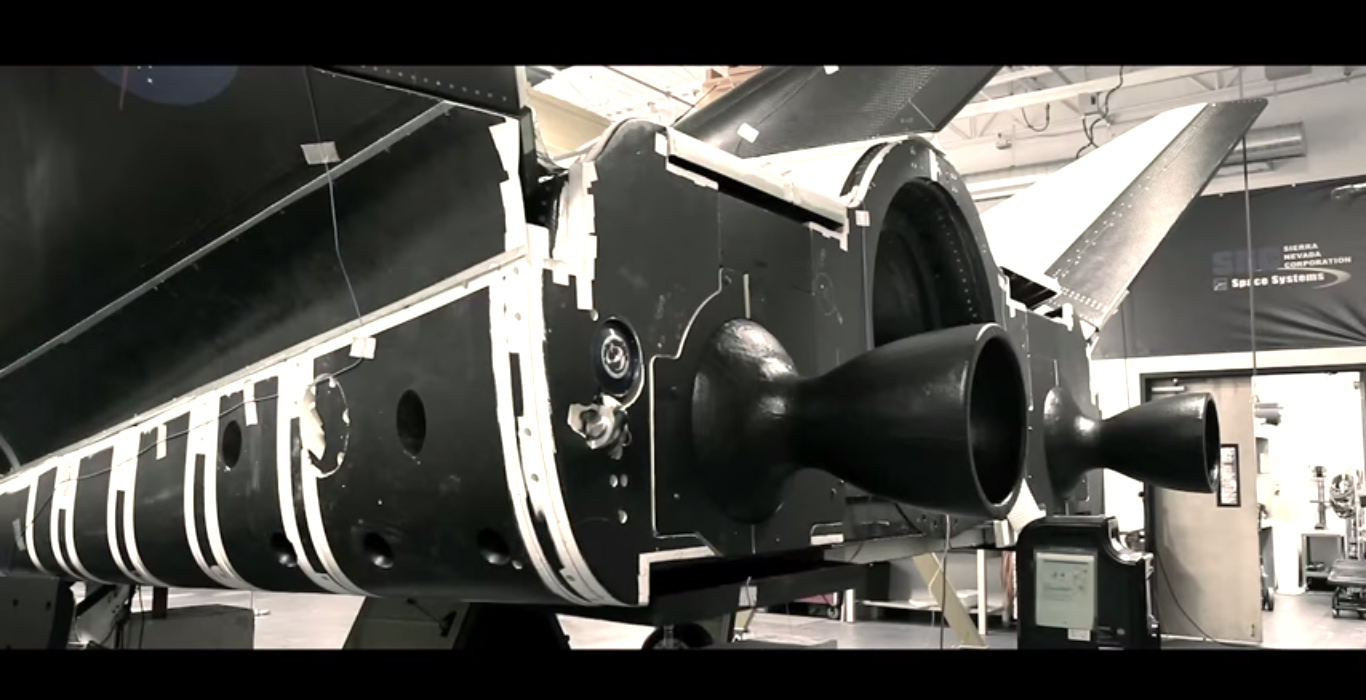
SNC is on an accelerating arc that, if all goes well, has the Dream Chaser assembly and inaugural blastoff somewhat in front of Boeing’s announced January 2017 launch and SpaceX’s undefined plans for perhaps launching something in 2016.
Read my recent AmericaSpace interviews with astronaut Chris Ferguson, now Boeing’s Crew and Mission Operations director, for compete details regarding the CST-100: here and here.
SNC’s Dream Chaser program seems to me to be the most advanced of the three competitors, as far as fabricating the orbital vehicle and announcing a manifested launch date in just over two years time, this writer remarked.
“Yes, I believe we are the first ones [of the three CCiCAP competitors] actually doing an orbital launch. And we are the first ones starting the orbital vehicle build. So we have both the rocket and the vehicle now under construction. And the [Atlas V] launch site will soon be under construction. So the elements are all there that are tangible and touchable,” Sirangelo stated.
“It’s not something that’s [just] theoretical! I think part of what you want to look for is what evidence is there of an ‘orbital vehicle’ under design and construction. We are a little over two years out, here in August. It’s not too far away.”
“We are pretty near to making that happen.” (Including the accelerated software development for the orbital vehicle: see Part 1.)
“We have all the [launch] elements in place. The vehicle has a schedule to get there. The rocket has a schedule to get there. Mission operations are on schedule and there are a lot of obvious public things going on that demonstrate that.”
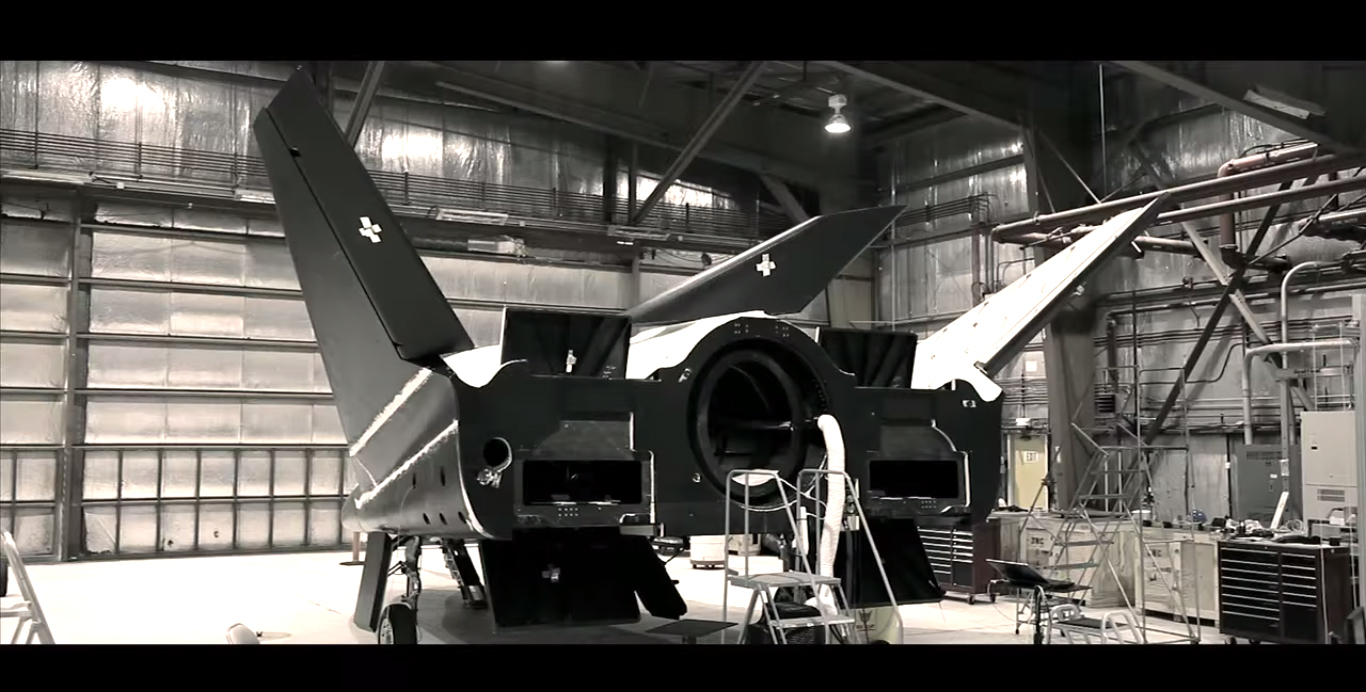
SNC has methodically laid the foundation to the vehicle’s future construction, operation, and expanding capabilities by organizing a nationwide team and partnering with diverse entities to manufacture and launch the winged space plane; they call it the Dream Chaser “Dream Team.”
“We have quite a large team of about 30 companies working for us in building the vehicle as part of our Dream Chaser ‘Dream Team’,” Sirangelo stated.
“There are 32 states and 30 companies with employment on this program, nine U.S. universities, nine NASA centers, as well as international partners involved in the program as our ‘Dream Team’.”
Among the major Dream Team aerospace industry partners are Lockheed Martin, United Launch Alliance, Draper Laboratory, Aerojet Rocketdyne, MacDonald Dettwiler & Associates Ltd. (MDA), UTC Aerospace Systems, Jacobs, Moog Broad Reach, Siemens PLM Software, Southwest Research Institute, and many others.
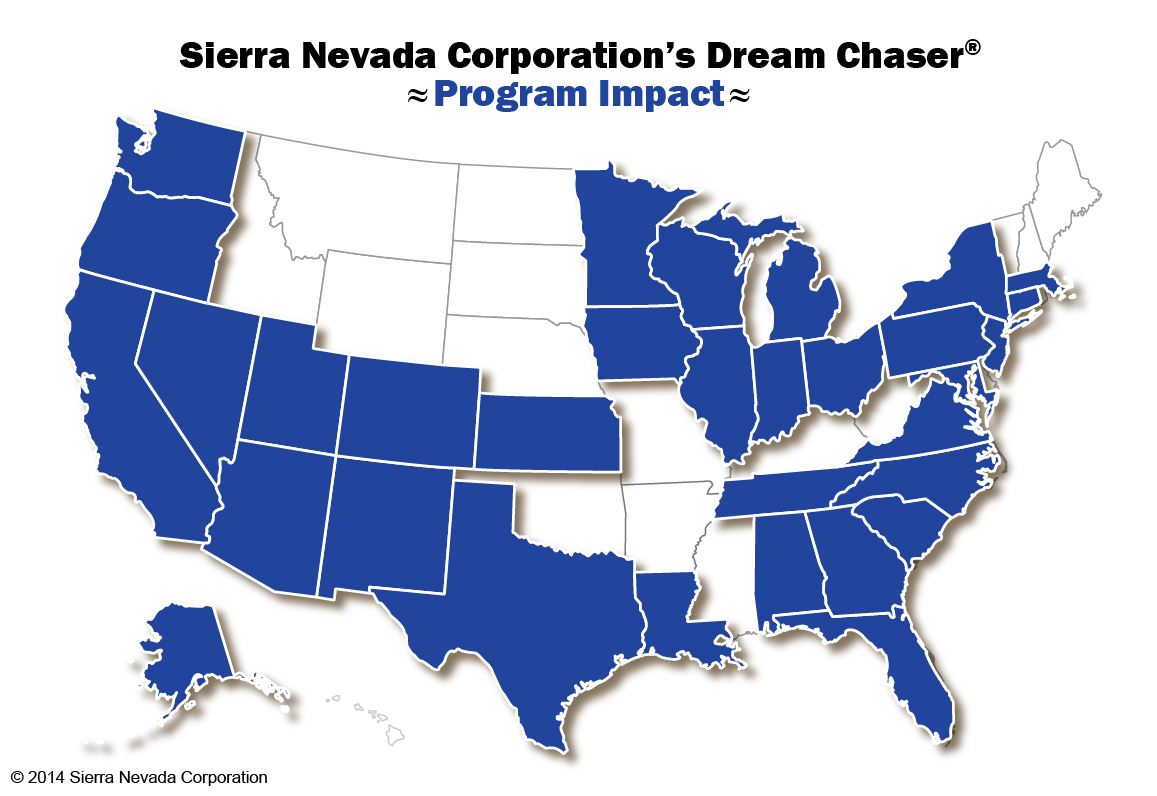
All efforts are geared to achieving an on-time maiden launch on Nov. 1, 2016, atop a United Launch Alliance Atlas V rocket from Space Launch Complex 41 at Cape Canaveral Air Force Station, Fla.
Please describe the status of construction of the orbital test vehicle and pieces coming from Lockheed Martin at NASA’s Michoud Assembly Facility (MAF) in New Orleans to Lockheed’s Ft. Worth, Texas, facility.
“We have begun the build of the first Dream Chaser orbital vehicle that will be on the first flight in November 2016!” Sirangelo explained.
“That has now been under work for about five months. And we have started delivering the first major pieces of that.”
“Lockheed Martin is one of our partner vendors and is building the Dream Chaser’s composite structure at MAF. Essentially it’s the chassis of the vehicle.”
“MAF is the same place as Orion’s structures are built by Lockheed. MAF has been a longstanding facility for NASA for the shuttle tanks. So it’s interesting that its now the place where SLS, Orion and now our commercial crew vehicle are being built in the same complex, which is a little know fact. So all three major parts of NASA’s human spaceflight program are being built at MAF.”
“Lockheed can use the same type of high quality tooling used for Orion also for some of the initial composite structures on Dream Chaser. Those pieces then go to the Lockheed facility in Ft Worth, Texas, which is where they build the Joint Strike Fighter and the F-16. So it’s finished and quality checked and finally cured there. They have the biggest autoclaves in the country at Ft Worth.”
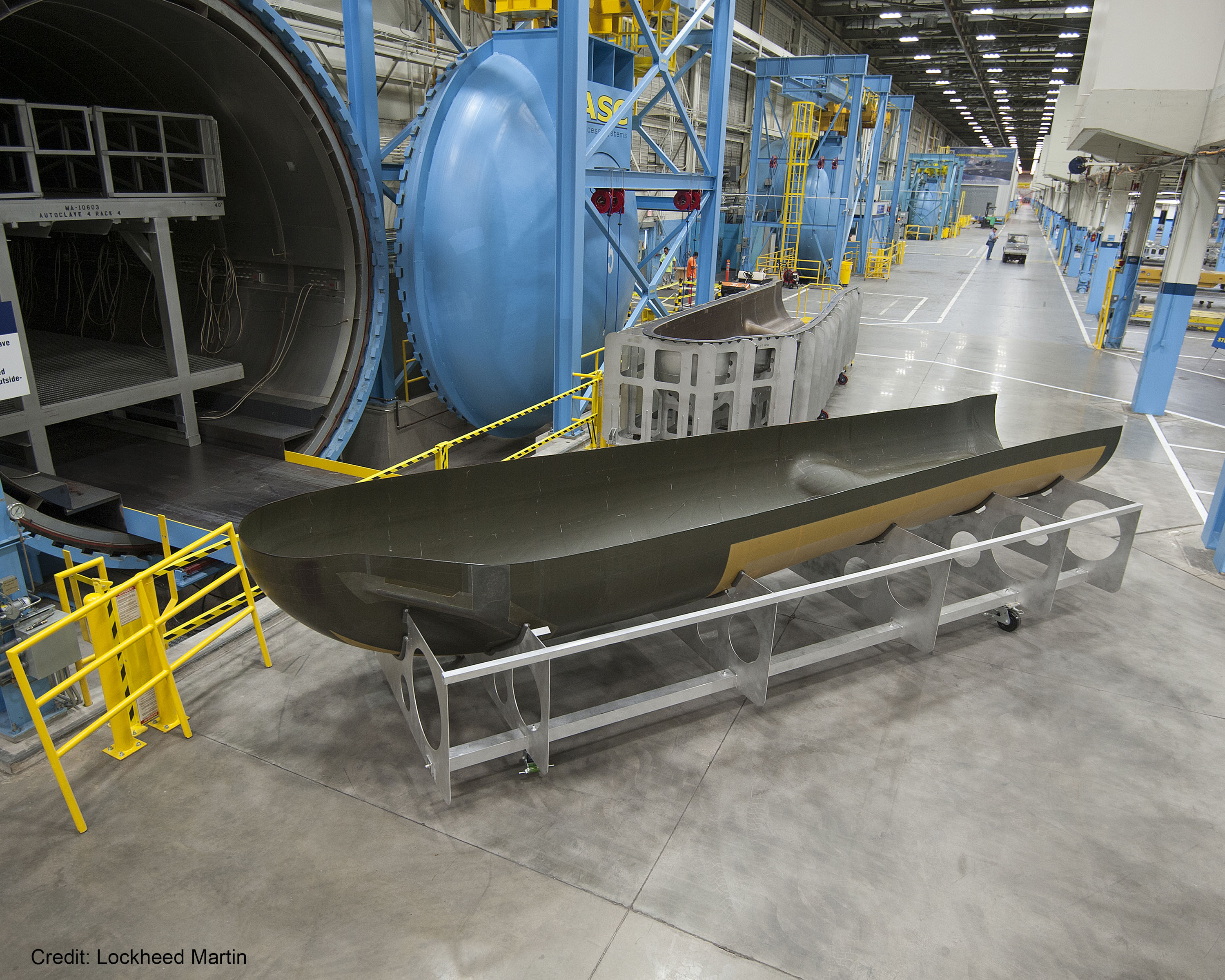
“So we are using both the most sophisticated facility’s group for fighter aircraft as well as getting the same type facilities used for Orion, and getting the benefit of that Orion history for us as well.”
“So Lockheed’s contribution is the composite structure.”
What’s the approximate timetable for fabricating, completing, and delivering the orbital test vehicle for the first flight?
“The major structures will be done and delivered by the end of this year. Then we will start populating it. We have pieces coming in from all over the country. So the primary structures will be delivered later this year.”
“Then we will be assembling it throughout next year so it’s ready for the 2016 flight. So somewhere around 12 to 18 months is when it will be done.”
Where is the vehicle’s final assembly site?
“The final assembly is in our SNC facility in Louisville, Colo. We have major subcomponents subcontracted from experts in all those areas. And some we do ourselves. Then we are responsible for assembling it all together.”
Now let’s focus on the Atlas V rocket. How committed is SNC to the November 2016 maiden orbital launch date for Dream Chaser?
“Yes! We bought the rocket. We put an initial deposit on it and as you get closer to launch you put up more money,” Sirangelo stated. “We are focused on being ready to launch in November 2016.”
“We have a launch slot [reserved with United Launch Alliance for the Atlas V rocket]. And that’s really important. They are allocated for the year. Because without a slot, you can’t fly even if you have a rocket.”
Why did you choose the Atlas (also chosen by Boeing to launch their CST-100 capsule)?
“We chose the Atlas V because it is the safest and most used rocket that’s out there. And when we are dealing with crew or even critical cargo we wanted to start with something that was as safe and predictable as any rocket that’s out there.”
“Dream Chaser is designed to be ‘rocket agnostic’ so it can launch on different launch vehicles, that’s the same as for very big satellites.”
So Dream Chaser can also be launched on ULA’s Delta IV. But the Delta and anything else would need to be man rated. In Part 3 we’ll discuss the possibilities for other international vehicles.
Describe the type of Atlas and whether you need any solids. Boeing requires two strap-on solids to launch their CST-100.
“We are flying an Atlas V 412, with a dual engine Centaur upper stage. We are lighter [compared to CST-100] and don’t need a second solid.”
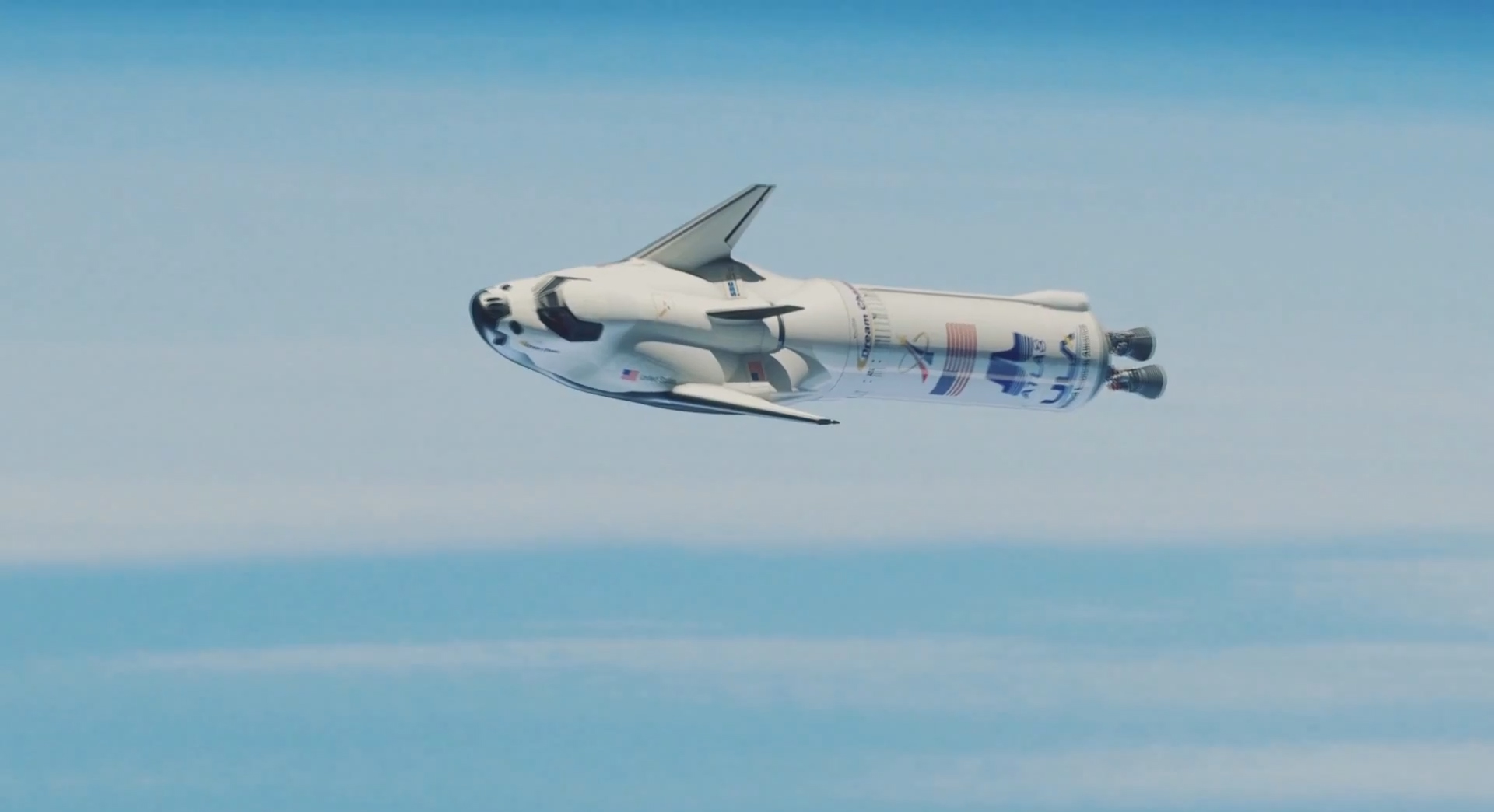
Can you explain why there is no shroud around Dream Chaser at launch (in answer to readers’ questions from Part 1)?
“A shroud is not needed. This has been tested thoroughly over 5 years and through many wind tunnel tests on the full launch stack in three separate testing centers.” Sirangelo replied.
“The lifting body of the DC does not produce any concerning lift at the angle of the Atlas V profile.”
Describe your work with ULA on the new crew access tower and access arm to be built to enable manned launches of Dream Chaser and CST-100 from the Atlas V pad at Space Launch Complex 41 in Florida.
“We and Boeing and ULA are looking together to do the tower work as necessary. It’s a three way thing and we are both working together cooperatively with ULA to make it happen.”
Given the different sizes and geometries of the vehicles, what are the changes to the crew walkway allowing direct crew access to Dream Chaser versus the CST-100?
“It’s basically just a different entry point for the vehicle. The tower and the modifications are similar,” Sirangelo said.
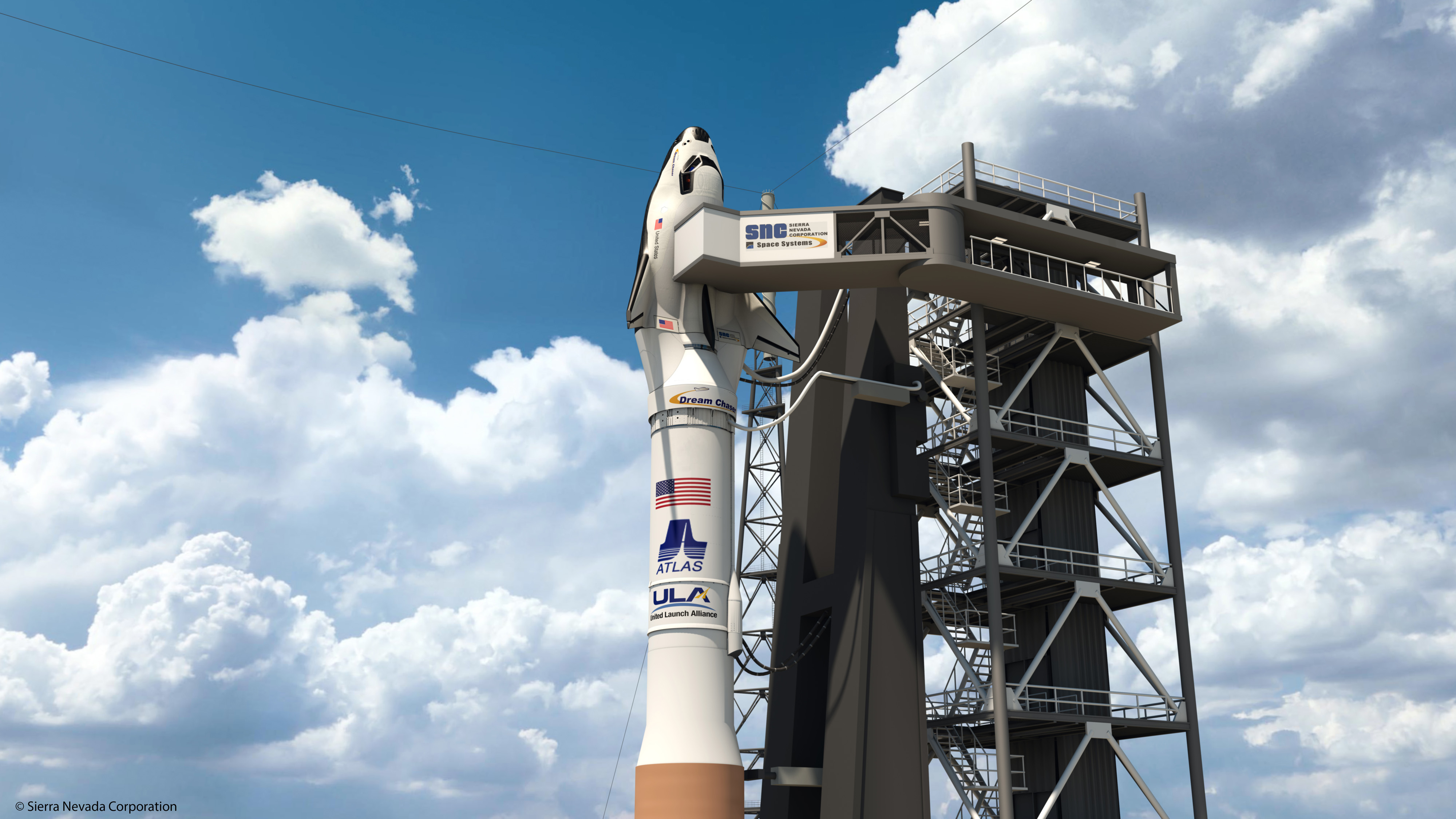
For complete details regarding the Atlas pad 41 modifications, read the AmericaSpace interview with ULA executives here.
“From start to finish its roughly about 18 months of work,” Howard Biegler, ULA’s Human Launch Services Lead, said during an exclusive onsite interview atop the Atlas pad at Space Launch Complex 41 on Cape Canaveral Air Force Station, Fla.
America totally lost the ability to launch humans when the shuttle program ended three years ago with the STS-135 mission commanded by Chris Ferguson.
Since then we have been 100 percent dependent on the Russia Soyuz capsule for rides to the International Space Station (ISS) and back, at a cost now exceeding $70 million per seat.
Mark Sirangelo and the entire SNC team, spread across 30 U.S. states, are on a mission to right that with Dream Chaser—and at a vastly reduced cost to the U.S. taxpayer.
“We think it’s about time that we get an American built vehicle launching from America to take U.S. astronauts to space. We feel like we are carrying the torch forward from the 135 shuttle flights and bringing the history of NASA along with us as we do this,” Sirangelo emphasized.
So, what’s the outlook for Dream Chaser if SNC does not receive the NASA contract under the Commercial Crew Transportation Capability (CCtCap) initiative? What are the details about the 2017 manned launch? International partners?
Tune in soon for Part 3 of this exclusive one-on-one interview with SNC VP Mark Sirangelo.
Be sure to read Part 1.
Want to keep up-to-date with all things space? Be sure to “Like” AmericaSpace on Facebook and follow us on Twitter: @AmericaSpace
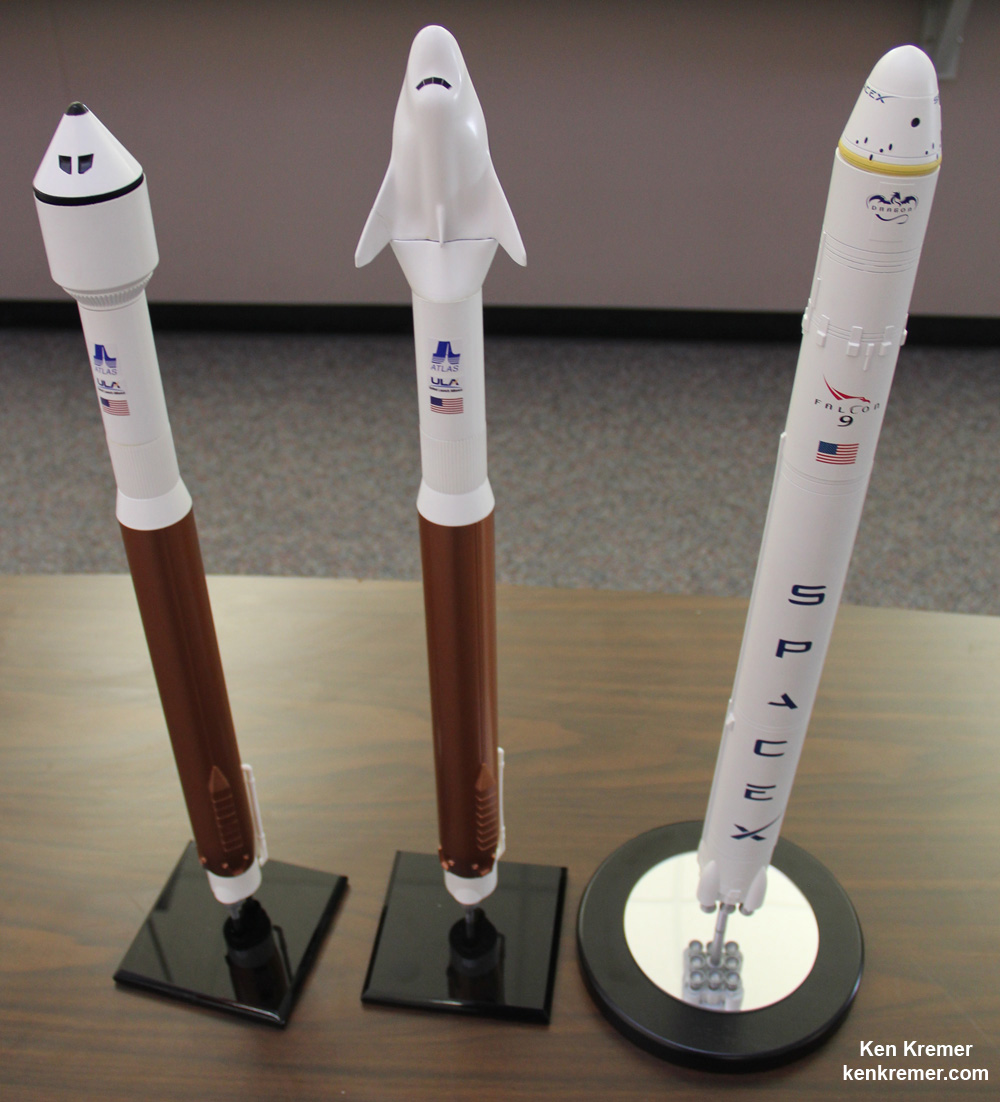




It will be great to see them fly. Competition is a good thing.
Looking forward to the next article in the series.
Having too many (if we do) will make private space stations more likely. I hope NASA continues to fund them all.